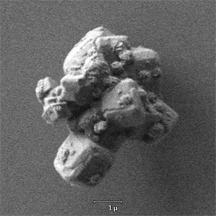Tuesday, February 10th, 2009
CMP applications experts gathered in Santa Clara, California on February 10th to share their experience and expertise at the fifth annual seminar sponsored by Levitronix. Leading developers, manufacturers, and end-users of CMP discussed all aspects of the technology, and since Levitronix makes magnetic levitation (MagLev) pumps there were many thorough presentations on slurry distribution issues. While all the presentations were worthy of mention, Budge Johl’s review of slurry particle analysis issues provided an outstanding combination of theory and practice.
Budge Johl, now with Rohm&Haas Electronic Materials, reviewed the science of CMP slurries and the currently known techniques to monitor fundamental parameters. “Just because we get a number out of a particle analyzer doesn’t mean it’s real,” reminded Johl. He told the tale of finding an inexplicable bi-modal slurry particle size distribution in one fab that eventually could be correlated to a nice single peak distribution in another fab, but not until the same capture times were used in the analysis tools in both fabs.
Instead of tracking the mean particle size, looking at large particle count (LPC) probably provide greater visibility into key CMP issues such as defects/scratches, changes in process performance, or reduced filter lifetime. It is critical to have good training programs and standard operating procedures for preventative maintenance (PM). Johl showed many photos of slurry distribution hardware that was caked with dried slurry due to lack of proper PMs; this dried slurry resulted in extreme LPC in fab CMP tools. “You can see bath-tub rings and stalagtites hangling down inside of day tanks,” said Johl.
With proper care to prevent slurry settling and drying, one of the main causes of LPC is slurry shear induced agglomeration (see figure). However, no good methods exist today to monitor hardness and morphology of particles; in particular, large soft particles may not cause defects so they might realistically be ignored. A new tool to detect particle hardness would be very helpful. Note that Levitronix’s Ultrapure Fluid Handling and Wafer Cleaning Conference runs on February 11th. –E.K.

